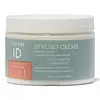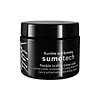What's inside
What's inside
 Key Ingredients
Key Ingredients

No key ingredients
 Benefits
Benefits

 Concerns
Concerns

 Ingredients Side-by-side
Ingredients Side-by-side

Water
Skin ConditioningCarthamus Tinctorius Seed Oil
MaskingGlycerin
HumectantCocos Nucifera Oil
MaskingPhenoxyethanol
PreservativeAcrylates/C10-30 Alkyl Acrylate Crosspolymer
Emulsion StabilisingAloe Barbadensis Leaf Juice
Skin ConditioningCetearyl Alcohol
EmollientParfum
MaskingAminomethyl Propanol
BufferingPvp
Emulsion StabilisingPEG-40 Stearate
EmulsifyingPEG-20 Hydrogenated Lanolin
EmollientPEG-150 Stearate
Honey
HumectantEthylhexylglycerin
Skin ConditioningCetyl Alcohol
EmollientCeteareth-20
CleansingBenzoic Acid
MaskingGlycereth-2 Cocoate
EmulsifyingSodium Cetearyl Sulfate
CleansingPolysorbate 60
EmulsifyingHydrolyzed Wheat Protein
Skin ConditioningTocopheryl Acetate
AntioxidantButyrospermum Parkii Butter
Skin ConditioningTheobroma Cacao Seed Butter
EmollientWater, Carthamus Tinctorius Seed Oil, Glycerin, Cocos Nucifera Oil, Phenoxyethanol, Acrylates/C10-30 Alkyl Acrylate Crosspolymer, Aloe Barbadensis Leaf Juice, Cetearyl Alcohol, Parfum, Aminomethyl Propanol, Pvp, PEG-40 Stearate, PEG-20 Hydrogenated Lanolin, PEG-150 Stearate, Honey, Ethylhexylglycerin, Cetyl Alcohol, Ceteareth-20, Benzoic Acid, Glycereth-2 Cocoate, Sodium Cetearyl Sulfate, Polysorbate 60, Hydrolyzed Wheat Protein, Tocopheryl Acetate, Butyrospermum Parkii Butter, Theobroma Cacao Seed Butter
Water
Skin ConditioningLanolin Wax
EmollientCetearyl Alcohol
EmollientPvp
Emulsion StabilisingTribehenin
EmollientTridecyl Stearate
EmollientGlycerin
HumectantAlcohol Denat.
AntimicrobialTridecyl Trimellitate
EmollientPEG-8 Beeswax
EmulsifyingCeteareth-25
CleansingDipentaerythrityl Hexacaprylate/Hexacaprate
EmulsifyingPEG-40 Castor Oil
EmulsifyingAcrylates/C10-30 Alkyl Acrylate Crosspolymer
Emulsion StabilisingTromethamine
BufferingTetrasodium EDTA
Phenoxyethanol
PreservativePotassium Sorbate
PreservativeBenzyl Benzoate
AntimicrobialHexyl Cinnamal
PerfumingHydroxyisohexyl 3-Cyclohexene Carboxaldehyde
MaskingEugenol
PerfumingLinalool
PerfumingParfum
MaskingWater, Lanolin Wax, Cetearyl Alcohol, Pvp, Tribehenin, Tridecyl Stearate, Glycerin, Alcohol Denat., Tridecyl Trimellitate, PEG-8 Beeswax, Ceteareth-25, Dipentaerythrityl Hexacaprylate/Hexacaprate, PEG-40 Castor Oil, Acrylates/C10-30 Alkyl Acrylate Crosspolymer, Tromethamine, Tetrasodium EDTA, Phenoxyethanol, Potassium Sorbate, Benzyl Benzoate, Hexyl Cinnamal, Hydroxyisohexyl 3-Cyclohexene Carboxaldehyde, Eugenol, Linalool, Parfum
Ingredients Explained
These ingredients are found in both products.
Ingredients higher up in an ingredient list are typically present in a larger amount.
Acrylates/C10-30 Alkyl Acrylate Crosspolymer is a synthetic polymer. It is used to thicken and improve the texture of products. Due to its properties, it can prevent water and oil ingredients from separating.
Cetearyl alcohol is a mixture of two fatty alcohols: cetyl alcohol and stearyl alcohol. It is mainly used as an emulsifier. Emulsifiers help prevent the separation of oils and products. Due to its composition, it can also be used to thicken a product or help create foam.
Cetearyl alcohol is an emollient. Emollients help soothe and hydrate the skin by trapping moisture.
Studies show Cetearyl alcohol is non-toxic and non-irritating. The FDA allows products labeled "alcohol-free" to have fatty alcohols.
This ingredient is usually derived from plant oils such as palm, vegetable, or coconut oils. There is debate on whether this ingredient will cause acne.
Due to the fatty acid base, this ingredient may not be Malassezia folliculitis safe.
Learn more about Cetearyl AlcoholGlycerin is already naturally found in your skin. It helps moisturize and protect your skin.
A study from 2016 found glycerin to be more effective as a humectant than AHAs and hyaluronic acid.
As a humectant, it helps the skin stay hydrated by pulling moisture to your skin. The low molecular weight of glycerin allows it to pull moisture into the deeper layers of your skin.
Hydrated skin improves your skin barrier; Your skin barrier helps protect against irritants and bacteria.
Glycerin has also been found to have antimicrobial and antiviral properties. Due to these properties, glycerin is often used in wound and burn treatments.
In cosmetics, glycerin is usually derived from plants such as soybean or palm. However, it can also be sourced from animals, such as tallow or animal fat.
This ingredient is organic, colorless, odorless, and non-toxic.
Glycerin is the name for this ingredient in American English. British English uses Glycerol/Glycerine.
Learn more about GlycerinParfum is a catch-all term for an ingredient or more that is used to give a scent to products.
Also called "fragrance", this ingredient can be a blend of hundreds of chemicals or plant oils. This means every product with "fragrance" or "parfum" in the ingredients list is a different mixture.
For instance, Habanolide is a proprietary trade name for a specific aroma chemical. When used as a fragrance ingredient in cosmetics, most aroma chemicals fall under the broad labeling category of “FRAGRANCE” or “PARFUM” according to EU and US regulations.
The term 'parfum' or 'fragrance' is not regulated in many countries. In many cases, it is up to the brand to define this term.
For instance, many brands choose to label themselves as "fragrance-free" because they are not using synthetic fragrances. However, their products may still contain ingredients such as essential oils that are considered a fragrance by INCI standards.
One example is Calendula flower extract. Calendula is an essential oil that still imparts a scent or 'fragrance'.
Depending on the blend, the ingredients in the mixture can cause allergies and sensitivities on the skin. Some ingredients that are known EU allergens include linalool and citronellol.
Parfum can also be used to mask or cover an unpleasant scent.
The bottom line is: not all fragrances/parfum/ingredients are created equally. If you are worried about fragrances, we recommend taking a closer look at an ingredient. And of course, we always recommend speaking with a professional.
Learn more about ParfumPhenoxyethanol is a preservative that has germicide, antimicrobial, and aromatic properties. Studies show that phenoxyethanol can prevent microbial growth. By itself, it has a scent that is similar to that of a rose.
It's often used in formulations along with Caprylyl Glycol to preserve the shelf life of products.
Pvp is a water-soluble synthetic polymer and common hairstyling ingredient. It is a film-forming ingredient and used to "hold" specific shapes of hair.
Pvp is less effective in high-humidity. It tends to draw moisture, but this moisture dismantles the structure and "hold".
Water. It's the most common cosmetic ingredient of all. You'll usually see it at the top of ingredient lists, meaning that it makes up the largest part of the product.
So why is it so popular? Water most often acts as a solvent - this means that it helps dissolve other ingredients into the formulation.
You'll also recognize water as that liquid we all need to stay alive. If you see this, drink a glass of water. Stay hydrated!
Learn more about Water